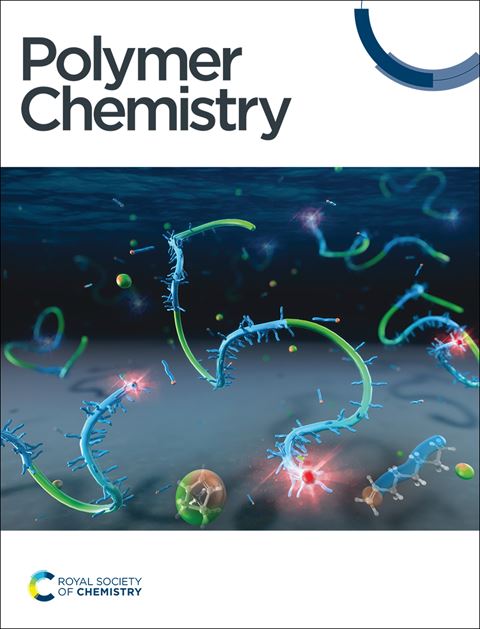两步:混合热响应聚合物体系中的溶胶-凝胶-凝胶转变
IF 4.1
2区 化学
Q2 POLYMER SCIENCE
引用次数: 0
摘要
传统的热可逆凝胶在温度调制后表现出溶胶-凝胶转变。这些体系通常由嵌段共聚物组成,其中一个嵌段表现出较低的临界溶液温度(LCST),在加热时触发亲溶剂到相对疏溶剂的转换。该体系包括聚环氧乙烷(PEO)-b-聚环氧丙烷(PPO)-b-PEO(“Poloxamers”)和聚n -异丙基丙烯酰胺(PNIPAM)基嵌段共聚物,因此,在加热时,它们的流变性能表现出一个单一的步骤,从主要的耗散响应转变为弹性响应。发现PNIPAM-PEO-PNIPAM和poloxam407的混合三级体系表现出非常规的溶胶-凝胶-凝胶转变。研究了该体系的流变行为,以证明溶胶,“凝胶I”和“凝胶II”相的流变特征,以及凝胶化的可逆性。分别从稀态和浓态的动态光散射和小角中子散射实验中,提出了这一过程的机理。本文章由计算机程序翻译,如有差异,请以英文原文为准。
Two-Stepping: Sol-gel-gel transitions in mixed thermoresponsive polymer systems
Conventional thermoreversible gels exhibit a sol-gel transition upon modulation of temperature. These systems are typically comprised of block copolymers in which one block exhibits a lower critical solution temperature (LCST), triggering a solvophilic to relatively solvophobic switch to that moiety when heated. The systems, which include poly(ethylene oxide)(PEO)-b-poly(propylene oxide)(PPO)-b-PEO (“Poloxamers”) and poly(N-isopropylacrylamide) (PNIPAM)-based block copolymers, thus exhibit a single step in their rheological profile upon heating, switching from a predominantly dissipative response to an elastic one. It has been found that a mixed tertiary system of PNIPAM-PEO-PNIPAM and Poloxamer 407 displays an unconventional sol-gel-gel transition. The rheological behaviours of this system have been studied to demonstrate the rheological profiles of the sol, “Gel I” and “Gel II” phases, as well as the reversibility of the gelation. A mechanism is proposed for this process, learning from dynamic light scattering and small-angle neutron-scattering experiments in dilute and concentrated regimes, respectively.
求助全文
通过发布文献求助,成功后即可免费获取论文全文。
去求助
来源期刊

Polymer Chemistry
POLYMER SCIENCE-
CiteScore
8.60
自引率
8.70%
发文量
535
审稿时长
1.7 months
期刊介绍:
Polymer Chemistry welcomes submissions in all areas of polymer science that have a strong focus on macromolecular chemistry. Manuscripts may cover a broad range of fields, yet no direct application focus is required.
 求助内容:
求助内容: 应助结果提醒方式:
应助结果提醒方式:


